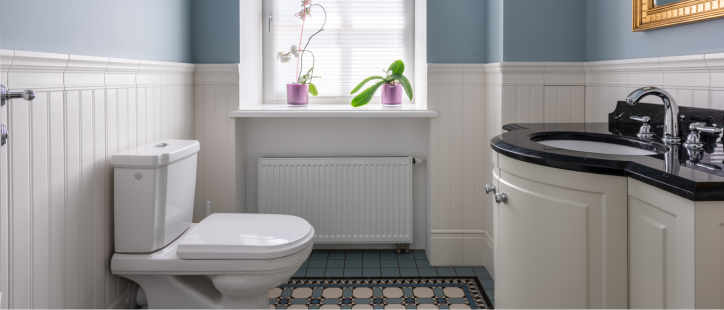Water leaks in your home can be a major source of frustration, not to mention potential damage to your property. Whether it’s a dripping faucet, a hidden pipe leak, or a running toilet, finding and addressing water leaks promptly can save you money and prevent further damage. In this helpful article, we’ll explore step-by-step how to find a water leak in your house, from identifying common signs to using DIY methods and when to call a professional plumber.
1. Identify Common Signs of Water Leaks
Before you start searching for a water leak, it’s essential to be aware of the common signs that may indicate a leak in your home:
- Increased Water Bill: A sudden and unexplained increase in your water bill could be a sign of a hidden water leak.
- Visible Water Stains: Check ceilings, walls, and floors for water stains or discoloration. These can indicate ongoing leaks.
- Mold or Mildew Growth: Moisture from leaks can promote the growth of mold and mildew in your home, especially in damp, dark areas.
- Damp or Musty Odors: A persistent musty smell in certain areas of your home might be a result of hidden moisture.
- Peeling or Bubbling Paint: Water damage can cause paint to peel or bubble on walls and ceilings.
- Low Water Pressure: A sudden drop in water pressure in your faucets and showerheads may signal a leak in your plumbing system.
- Audible Sounds: The sound of running water when no taps are open can indicate an underground leak.
2. Check Common Leak Locations
Certain areas in your home are more prone to water leaks than others. Start your search by inspecting these common locations:
- Bathrooms: Examine around toilets, sinks, and showers for any visible leaks or water stains.
- Kitchen: Check under the sink, around the dishwasher, and the refrigerator’s water supply line.
- Basement: Inspect the basement for signs of moisture or water pooling, especially in corners or near the floor drains.
- Water Heater: Look for signs of leakage around the water heater, including the pressure relief valve and connections.
- Crawl Spaces: If your home has a crawl space, inspect it for any dampness or pooling water.
3. Conduct a Meter Test
A meter test is an effective way to determine if you have a water leak in your plumbing system. Follow these steps:
- Turn off all faucets, appliances, and water-consuming devices in your home.
- Locate your water meter, usually located near the street or at the front of your property.
- Record the reading on the water meter.
- Wait for a few hours without using any water in your home.
- Recheck the water meter. If the reading has changed during this time, it suggests that you have a water leak.
4. Use Food Coloring for Toilet Leak Detection
Toilets are a common source of leaks. To check for a toilet leak:
- Remove the tank lid.
- Add a few drops of food coloring into the tank water.
- Wait for about 30 minutes without flushing.
- Check the bowl. If the water in the bowl changes color, it indicates a leak from the tank into the bowl.
5. Inspect Your Faucets and Fixtures
Check all faucets, showerheads, and fixtures in your home for leaks:
- Turn off all faucets.
- Examine the base of each faucet and fixture for any visible leaks or drips.
- Place a paper towel or tissue under each faucet and fixture and leave it for a few hours. If it becomes wet, there may be a slow leak.
6. Look for Hidden Pipe Leaks
Hidden pipe leaks can be challenging to locate, but there are some methods to help you identify them:
- Listen for Sounds: If you hear the sound of running water when no taps are open, it could be a sign of a hidden pipe leak.
- Check the Water Meter: As mentioned earlier, the water meter test can help identify hidden leaks in your plumbing system.
- Use a Water Leak Detector: Consider using a water leak detector, which can detect leaks by sensing moisture or changes in humidity.
7. Call a Professional Plumber
If you’ve followed these steps and still can’t locate the source of the water leak, or if you’ve identified a leak but are unsure how to proceed with repairs, it’s time to call the professional plumbers at Maffei Services. Our licensed plumbers have the expertise and equipment to detect and repair even the most challenging water leaks.
8. Preventative Measures
While knowing how to find and address water leaks is crucial, taking preventative measures can help you avoid leaks in the first place:
- Regular Maintenance: Schedule annual plumbing inspections and maintenance to catch potential issues early.
- Replace Old Plumbing: Consider replacing old or deteriorating plumbing pipes and fixtures, especially if your home has galvanized or outdated pipes.
- Install Water Leak Detectors: Invest in water leak detectors or smart water monitoring systems that can alert you to leaks as soon as they occur.
- Monitor Water Usage: Keep an eye on your water bills and usage. Sudden increases could be a sign of a hidden leak.
Finding a water leak in your house requires a systematic approach, from identifying common signs to conducting meter tests and inspecting common leak locations. By following these steps and taking preventative measures, you can detect leaks early, prevent further damage, and save money on water bills and repairs. If you encounter a particularly challenging or hidden leak, don’t hesitate to seek the assistance of our professional plumbers to resolve the issue efficiently.



